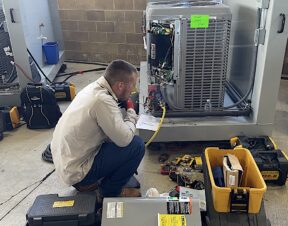New York — Using his comprehensive knowledge of the environmental impacts on copper when used for engineering infrastructure, buildings, machines, and components, Jim Michel, Technical Manager at the Copper Development Association (CDA), serves as one of the latest authors of the textbook, Environmental Degradation of Advanced and Traditional Engineering Materials, published by CRC Press.
Available now for students and professionals interested in the development of deterioration-resistant technological systems constructed with metallurgical, polymeric, ceramic, and natural materials, Environmental Degradation of Advanced and Traditional Engineering Materials explains the degradation mechanisms of each of these materials under various environmental conditions.
“This book serves as a valuable reference guide, pulling information together on a wide variety of materials, both old and new,” said Michel. “Today, materials such as plastics, ceramics, glass, wood, concrete and asphalt are being used more frequently. However, traditional materials, like copper and steel, really need to be understood as well.”
Michel was approached by Lloyd Hihara, a professor at the University of Hawaii and one of the editors of the book, to write a chapter about the metallurgy of copper. He agreed, co-authoring the chapter with Marc Edwards, a professor in the Department of Civil and Environmental Engineering at Virginia Tech. Although Edwards and Michel had worked together on other projects prior, chapter eight of the textbook—“Crystalline Alloys: Copper”—was the first time the two worked in collaboration on a writing piece. “Crystalline Alloys: Copper” is Michel’s first published piece.
Michel has worked in the metals and corrosion industries since 1973, including the copper and brass industry, the zinc industry and the steel industry. He has also operated his own metallurgical consulting business. Additionally, Michel taught metallurgy courses for ASM International for 10 years. He joined the Copper Development Association in 2007.
According to the publisher, “Understanding the chemical stability of materials remains a key element in determining their useful life.” For this reason, each chapter presents the basic properties of the class of material, detailed characteristics of degradation, guidelines on how to protect against corrosion, and a description of testing procedures.
Environmental Degradation of Advanced and Traditional Engineering Materials is available online, at http://www.crcpress.com/product/isbn/9781439819265 or at Amazon.com.
For more information related to copper and copper alloys, please visit www.copper.org.




Join the conversation: